You know, I completely get it if you’re struggling to reel in the big ones across fluctuating water temperatures. It can feel like a real head-scratcher trying to adjust your tactics with each passing season.
But trust me on this – studies suggest that comprehending the link between fish behavior and water temperature can significantly boost our angling successes. In this article, we’re going to dive into 19 priceless tips on mastering fishing in diverse water temperatures.
So strap in and prepare for an exhilarating ride as we discover these nuggets of wisdom designed to amplify your fishing prowess!
Key Takeaways
- Water temperature affects fish behavior and activity levels, so it’s important to understand the link between temperature and fishing success.
- When fishing in cold water temperatures, use strategies like keeping bait moving and finding where fish hide to increase your chances of catching fish.
- When fishing in warm water temperatures, adjust your techniques by fishing deep, using natural bait, and finding cooler water refuges for better results.
Understanding the Impact of Water Temperature on Fish
Water temperature plays a crucial role in determining fish behavior and activity levels, as it directly affects their metabolism and feeding patterns.
How fish behavior changes with temperature
Warm or cold water changes how fish act. It plays a big part in their growth, feeding habits, and how they take in nutrients. Fish like warm water when they want to eat and grow. They need more oxygen when the water is hot though.
If it gets too hot, it can harm them and make them slow or not move at all. Some types of fish like warmer waters than others do. Places with hotter weather can also affect the type of fish you might see because hot temperatures change a fish’s body over time.
This heat even figures out if they can find food well and stay safe from other bigger fish that may hurt them.
Factors that influence fish activity in different temperatures
Water temperature has a big role in fish activity. When it gets too hot, there is less oxygen in the water. This makes fish slow and lazy. But some types of fish like it warm! They get more active when the water heats up.
Still, if it’s way too warm, they could die. At the other end, cold water can slow down how fast a fish grows or eats food. This means that knowing about water temperatures can help you catch more fish!
Tips for Fishing in Cold Water Temperatures
When fishing in cold water temperatures, it’s important to utilize strategies that specifically target fish during winter conditions and choose the right bait and lures that will entice bites in chilly waters.
Effective techniques for ice fishing should also be employed to increase your chances of success.
Strategies for targeting fish in winter conditions
Catching fish in cold weather needs a good plan. Fish move less when the water gets cold. I suggest you use artificial bait that hooks many fish types. Here are some more strategies to try:
- Keep your bait moving: Even in cold water, a bit of motion helps lure fish.
- Fish slow: Fish don’t move fast in winter so your bait should not either.
- Find where they hide: As the tide changes and the food moves, the fish will follow.
- Mind the weather: Clear water on a cold day can make the fish go away from the shore. Try to find them in deeper waters.
- Keep safe: Make sure you dress well for winter fishing and stay warm!
Effective techniques for ice fishing
Ice fishing is a unique and exciting way to catch fish during the cold winter months. Here are some effective techniques that you can use to increase your chances of success on the ice:
- Drill multiple holes: By drilling several holes in different locations, you can increase your chances of finding active fish.
- Use a depth finder: A depth finder or fish finder can help you locate the right depth where fish are swimming.
- Fish near structure: Look for underwater structures such as rocks, fallen trees, or weeds, as these provide shelter and food for fish.
- Use small baits: In cold water, fish are less active and more selective about their food. Use small baits that mimic their natural prey.
- Utilize tip-ups: Tip-ups are devices that hold your line in the water while you wait for a bite. They allow you to cover more area and increase your chances of catching fish.
- Keep it slow: During winter, fish have slower metabolisms. Therefore, it’s important to use slow and subtle movements when jigging or retrieving your bait.
- Pay attention to weather patterns: Changes in weather can affect fish behavior. Fishing during stable weather conditions often leads to better results.
- Dress appropriately: Layer up with insulated clothing and wear waterproof boots and gloves to stay warm and comfortable on the ice.
- Stay safe: Always check the thickness of the ice before venturing out onto frozen lakes or ponds. Carry safety equipment such as ice picks and a flotation device in case of an emergency.
Choosing the right bait and lures for cold water fishing
When fishing in cold water temperatures, it’s important to choose the right bait and lures to increase your chances of success. In colder weather, fish tend to be slower and less active, so you’ll want to use lures that mimic their natural prey but are presented at a slower pace.
A good tactic is slow rolling a spinnerbait around docks, logs, stumps, and through treetops. This method can entice bites from sluggish fish in cold water conditions. Additionally, finesse crankbaits can be effective when temperatures drop into the 40s.
These smaller crankbaits have a more subtle action that appeals to hesitant or lethargic bass. Remember to consult a bass lure selector chart based on water clarity and temperature to help you choose the most appropriate lures for your fishing trip in cold water conditions.
Tips for Fishing in Warm Water Temperatures
When fishing in warm water temperatures, it is important to adjust your strategies for optimal results.
Best practices for fishing in hot weather
When fishing in hot weather, it’s important to follow these best practices:
- Fish deep: During hot days, fish tend to go deeper in the water where it’s cooler. Use sinking lures or weights to reach them.
- Fish in the current: Moving water can provide relief from the heat for fish. Look for areas with a strong current, such as river mouths or rapids.
- Night fishing: Fishing during the cooler hours of the night can increase your chances of success. Many fish become more active and come closer to the surface when it’s cooler.
- Use natural bait: In hot weather, fish are often less active and more selective about what they eat. Using live bait that is naturally found in their environment can be more effective.
- Stay hydrated and protected: Remember to drink plenty of water and wear sunscreen to protect yourself from the sun’s harmful rays while fishing in hot weather.
Finding cooler water refuges
Water temperatures in a waterbody are not consistent. Fish often seek out cooler spots where they can take refuge. Here are some tips for finding those cool spots:
- Look for shaded areas: Trees, overhanging branches, or structures like bridges can provide shade and cooler temperatures for fish.
- Explore deeper water: Deeper parts of the waterbody tend to stay cooler because they receive less direct sunlight. Try fishing in deeper areas to find cooler water.
- Search for underwater structures: Rocks, underwater vegetation, and submerged logs can create pockets of cooler water where fish like to hide.
- Follow currents: In flowing waterbodies, fish will often congregate in areas where the current is stronger. These areas tend to have cooler, oxygenated water.
- Check out springs or inflows: Springs and streams that flow into a lake or river can introduce colder water, especially during hot weather.
Adjusting your fishing times for optimal results
To optimize your fishing success in warm water temperatures, it’s important to adjust your fishing times. Fishing during the cooler parts of the day can be more effective when the weather gets hot.
This means heading out early in the morning or later in the evening when the sun is not as intense. By doing this, you can increase your chances of catching fish that are more active and feeding during these cooler periods.
Tips for Fishing in Moderate Water Temperatures
– Try using different fishing methods based on the water temperature to maximize your chances of success. Want to learn more about targeting fish in mild weather conditions? Keep reading!
Techniques for targeting fish in mild weather conditions
When the weather is mild, there are some techniques you can use to target fish effectively. Here are some tips:
- Use live bait: In mild weather, fish tend to be more active and responsive to live bait. Use worms, minnows, or other natural bait to attract them.
- Try different depths: Fish may be found at different depths depending on the temperature and weather conditions. Experiment with fishing at different depths to see where the fish are biting.
- Use light tackle: In mild weather, fish may be more cautious and easily spooked by heavy tackle. Opt for lighter fishing line and smaller hooks to increase your chances of a successful catch.
- Look for structure: Fish often seek shelter or hide near structures such as rocks, submerged logs, or weed beds. Cast your line near these areas to increase your chances of hooking a fish.
- Be patient and observant: Mild weather conditions can sometimes make fish less active and harder to find. Take your time and watch for any signs of fish activity such as jumping or feeding on the surface.
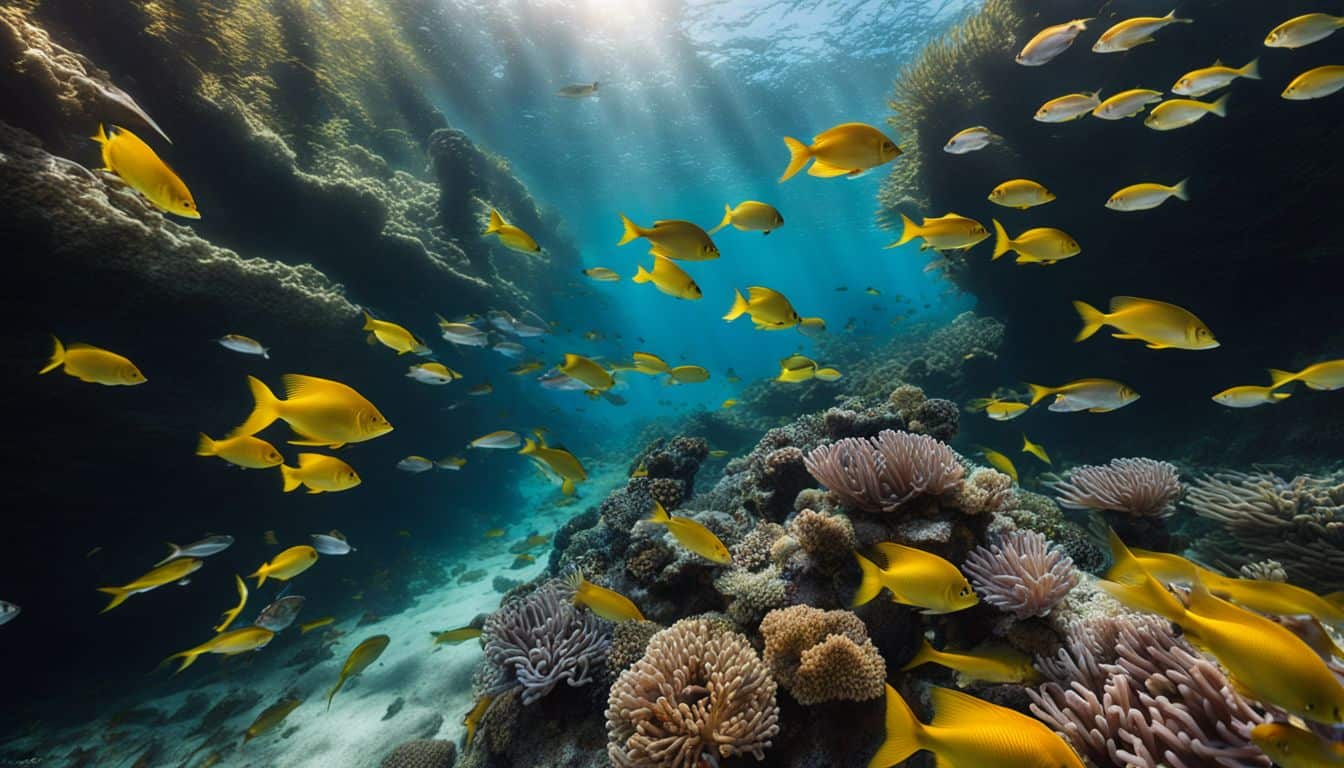
Finding the ideal temperature range for different species
Each species of fish has a preferred water temperature range that they thrive in. It’s important to understand this ideal range in order to have successful fishing trips. For example, targeting salmon and trout when the water temperature is over 19 degrees Celsius is not recommended.
High water temperatures can also negatively affect large barbel and pike. By knowing the preferred temperature ranges for different fish species, you can adjust your fishing techniques accordingly and increase your chances of catching more fish.
Using different fishing methods based on water temperature
In fishing, water temperature plays a big role in how fish behave and where they can be found. When it comes to moderate water temperatures, there are different fishing methods you can use to increase your chances of success.
One technique is adjusting the depth at which you fish. As water temperature changes, so does the location of fish within the water column. By experimenting with different depths, you can find where the fish are most active.
Another method is using baits and lures that match the feeding habits of fish during moderate temperatures. For example, when the water is warmer, fish tend to be more active and may go after faster-moving prey like insects or small baitfish.
On the other hand, in cooler waters, they might prefer slower-moving or stationary prey like worms or dead minnows.
Lastly, consider trying out different fishing locations based on water temperature. In rivers or streams specifically, higher up in the system tends to have cooler water temperatures than downstream areas.
This means that if you’re targeting species that thrive in colder waters like trout or salmon, venturing upstream could yield better results.
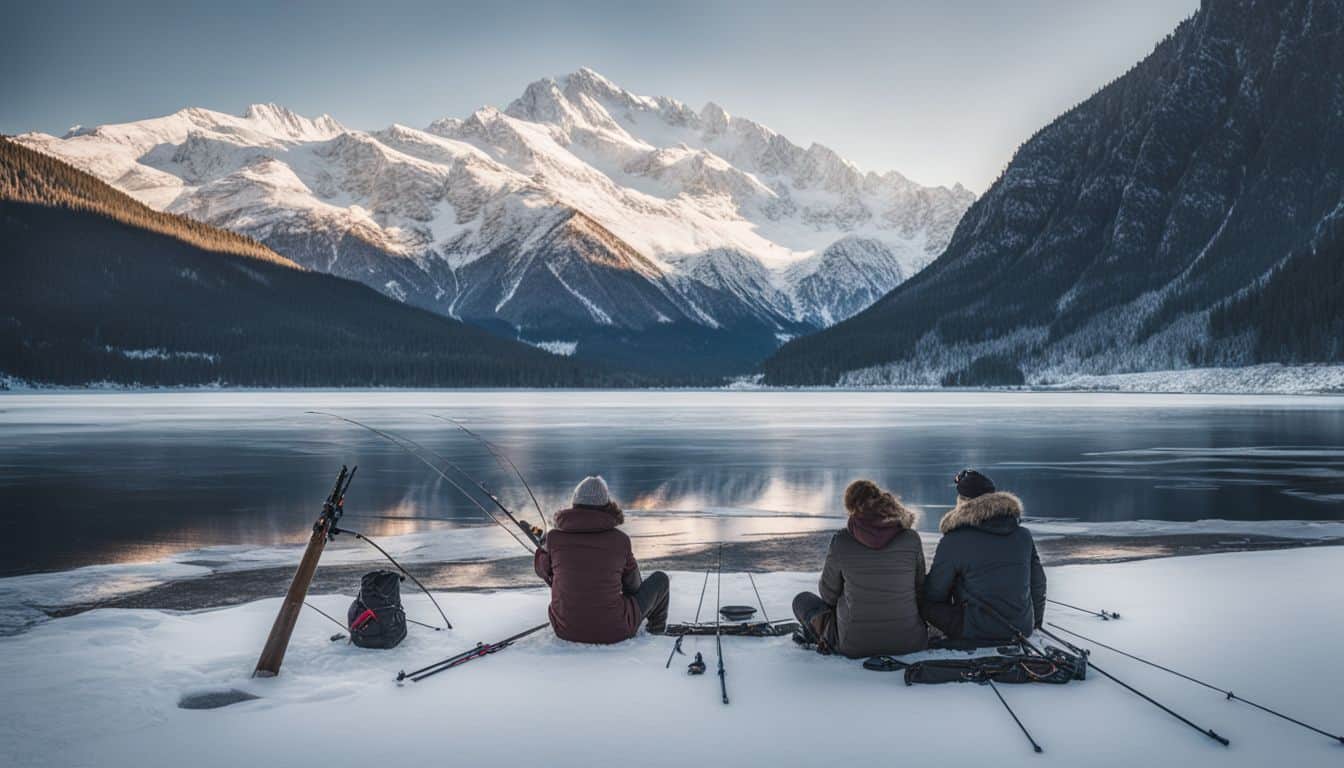
Fishing Strategies for Different Water Bodies
Tailwaters offer unique fishing opportunities due to the consistently cool water temperatures and increased oxygen levels. Anglers can target a variety of fish species, such as trout and smallmouth bass, by using techniques like nymphing or streamer fishing.
River and creek fishing requires adapting to the current speed and structure, using tactics like drift fishing or casting upstream. In winter conditions, fishing the flats can be productive as fish seek warmer water depths.
Tailwaters and their unique fishing opportunities
Tailwaters are rivers that are controlled by dams, which means they have consistent water levels and regulated flow. One of the advantages of fishing in tailwaters is the temperature stability, which creates an ideal environment for fish.
This results in larger populations of big fish compared to nearby freestone rivers. Tailwaters also provide abundant food sources for fish due to the consistent water temperatures and flows created by dams.
Understanding these conditions and adapting your techniques accordingly will help you make the most out of fishing in tailwaters.
River and creek fishing techniques
When fishing in rivers and creeks, there are a few techniques that can help increase your chances of success. Here are some tips for fishing in these water bodies:
- Look for deep holes or pockets of slower – moving water. Fish tend to congregate in these areas, especially near rocks or fallen trees.
- Cast your bait or lure upstream and let it drift naturally downstream with the current. This mimics the movement of natural prey and makes it more enticing to fish.
- Use light tackle and smaller bait or lures. River and creek fish are often more cautious and selective when it comes to what they eat.
- Try different retrieval techniques such as twitching, jigging, or slow reeling to see what attracts the most bites.
- Be patient and observant. Take note of where you see fish activity, such as jumping or splashing, as this can indicate their feeding patterns.
Fishing the flats in winter conditions
Fishing the flats in winter conditions can be quite challenging. During this time, the constant changes in weather and water temperature can make it harder to find fish. In fact, many fish species tend to move to thermal refuges, which are areas with more stable temperatures.
As a result, fishing on the flats during winter may not be as productive as other times of the year. It’s important for anglers to do their research and be aware of these changes before heading out.
Understanding the behavior of fish and how they respond to cold water can help determine where to find them and what techniques to use. So, when planning a winter fishing trip on the flats, it’s crucial to adjust strategies accordingly and focus on different types of water bodies that may have better angling opportunities.
Gear and Tackle Recommendations
When fishing in different water temperatures, it’s crucial to have the right gear and tackle for optimal success. Choose a fishing rod and reel that are suited for the specific conditions you’ll be facing, whether it’s cold, warm, or moderate water temperatures.
Select bait and lures that will entice fish to bite based on their feeding patterns during these temperature ranges. Additionally, make sure to handle fish properly and with care to minimize stress and harm caused by temperature changes.
Choosing the right gear for different water temperatures
When fishing in different water temperatures, it’s important to choose the right gear. Here are some tips to help you select the appropriate gear for each temperature range:
- Coldwater Fishing:
- Use a medium to heavy – action fishing rod for better control and sensitivity.
- Opt for a spinning reel with good line capacity to handle larger fish.
- Choose monofilament or fluorocarbon fishing line, as they perform well in cold temperatures.
- Consider using smaller artificial lures or live baits that imitate natural prey.
- Warmwater Fishing:
- Use a lightweight and sensitive fishing rod for better feel and accuracy.
- Select a baitcasting reel for casting accuracy and control.
- Use braided fishing line, as it has high strength and low stretch properties.
- Experiment with larger artificial lures or live baits that match the feeding patterns of warm – water species.
- Moderate Water Temperatures:
- Choose a versatile fishing rod that can handle various techniques.
- Opt for a spinning reel with good line capacity for versatility.
- Consider using both monofilament and fluorocarbon lines depending on the fishing technique.
- Use a variety of bait types, including artificial lures and live baits, based on fish preferences.
Recommended bait and lures for each temperature range
In different water temperatures, the type of bait and lures you use can greatly impact your fishing success. When the water is cold, around 40-50 degrees, try using slow-moving baits like jigs or soft plastics.
As the temperature warms up to 50-60 degrees, crankbaits and spinnerbaits become more effective for bass fishing. In warmer waters of 60-70 degrees, topwater lures such as buzzbaits and poppers are recommended.
And when the water gets really warm, above 70 degrees, switch to faster moving baits like swimbaits or jerkbaits. By matching your bait selection with the right temperature range, you’ll have a better chance of catching fish.
Proper handling and care of fish in varying temperatures
As an avid fishing enthusiast, it’s important to know how to properly handle and care for fish in different temperatures. Fish survival rates can be affected by water temperature fluctuation, so it’s crucial to follow proper fishing techniques.
When fishing in hot water, it’s best to use the right-sized gear and land the fish quickly to increase its chances of survival. It’s also recommended to avoid removing the fish from the water as much as possible.
Remember that most fish species are cold-blooded and cannot regulate their body temperature like us humans, so they must adjust to changes in water temperature. Drastic temperature changes can disrupt their behavior and overall wellbeing.
Safety Precautions for Fishing in Different Water Temperatures
Stay hydrated and protected from the sun to ensure your safety while fishing. Understand the risks of extreme temperatures and follow cold water safety tips for a successful fishing trip.
Find out more about responsible fishing practices in different water temperatures to enhance your angling experience.
Importance of staying hydrated and protected from the sun
Staying hydrated and protected from the sun is really important when you’re out fishing. When it’s hot outside, drinking plenty of water is crucial to prevent dehydration and regulate your body temperature.
It’s easy to get caught up in fishing and forget to drink water, but staying hydrated helps you stay safe and healthy. Make sure to bring enough water with you on your fishing trips, especially on hot days.
Also, don’t forget to wear sunscreen and a hat to protect yourself from the harmful rays of the sun. Taking these simple precautions will ensure that you have an enjoyable and safe fishing experience.
Understanding the risks of fishing in extreme temperatures
Fishing in extreme temperatures can pose risks to both the fish and the angler. When water levels are low and temperatures are high, there is a greater risk of disease and parasite infections in fish.
This can lead to poor fish health and potentially even death. Fish that are already stressed due to drought and high temperatures may not survive fishing activities in hot water. It’s important to consider how extreme temperatures affect fish behavior and oxygen availability.
In these conditions, fish may seek deeper water where the temperature is cooler or warmer. Additionally, environmental factors like air temperature, sea surface temperature, wind speed, and ice can impact fishing safety.
To ensure your own safety while fishing in extreme temperatures, always handle your equipment with care to avoid accidents or injuries. If you make your own lead sinkers, be aware of the risks of lead poisoning.
Cold water safety tips for anglers
Fishing in cold water can be risky, so it’s important to take safety precautions. Here are some tips to help you stay safe:
- Always wear a life jacket when fishing in cold water. It can save your life if you fall in.
- If you’re fishing from a boat, make sure it’s equipped with safety gear like flares and a whistle.
- Before heading out, check the weather forecast and dress appropriately for the conditions.
- Be aware of your surroundings and watch out for ice or slippery surfaces.
- Avoid going fishing alone in cold water. It’s safer to go with a buddy who can help if anything goes wrong.
- If you do fall into cold water, try to stay calm and conserve your energy. Don’t remove your clothing – it will provide insulation.
- Swim towards shore or an ice floe if possible, but don’t try to climb onto the ice unless it’s thick and sturdy.
- If you can’t get out of the water quickly, use the Heat Escape Lessening Position (H.E.L.P.) by crossing your arms tightly against your chest, bringing your knees up toward your chest, and keeping still.
Conservation Practices for Responsible Fishing
Practice catch-and-release techniques in different water temperatures to minimize the impact on fish populations.
Catch-and-release practices in different water temperatures
As an angler, it’s important to understand how water temperature affects catch-and-release practices. When the water temperature is in the 70 F range, fishing-related mortality tends to increase.
That means that when you release a fish back into warmer waters during this temperature range, there’s a higher chance that the fish may not survive. This is why it’s crucial to handle and release fish properly, especially in warmer temperatures.
When practicing catch and release, make sure to minimize stress on the fish by handling them gently and quickly. Avoid removing them from the water for too long as this can decrease their chances of survival.
If you’re fishing in warm water temperatures, consider using barbless hooks or pinching down the barbs.on your hooks to make it easier to remove them without causing harm.
Additionally, be mindful of where you’re fishing and what species are present. Some species may be more susceptible to warm-water stress than others. By understanding which species are more sensitive to certain temperatures, you can make informed decisions about whether or not to keep or release a particular fish.
Minimizing environmental impact during fishing trips
As a responsible angler, it is important to minimize our environmental impact during fishing trips. One way to do this is by practicing catch-and-release techniques. By releasing fish back into the water, we can help maintain healthy fish populations and protect vulnerable species.
It’s also essential to be mindful of fish spawning seasons and protected areas, as these are crucial times for their survival and reproduction. Additionally, being aware of conservation measures and following sustainable practices can contribute to the preservation of ecosystems and habitats.
By taking care of the environment while enjoying our favorite sport, we can ensure that future generations will have the opportunity to experience the thrill of fishing too.
Being mindful of fish spawning seasons and protected areas
As an avid angler, it’s important to be mindful of fish spawning seasons and protected areas. Fish have specific times of the year when they reproduce, called spawning seasons. During this time, they gather in certain areas to lay their eggs and guard them until they hatch.
It is crucial that we respect these areas and avoid fishing there during these times. By doing so, we can help protect the future generations of fish and maintain a healthy population.
Additionally, many countries have designated Marine Protected Areas (MPAs) where fishing activities are restricted or banned altogether. These areas serve as important habitats for various marine species and play a vital role in maintaining ecological balance.
As responsible anglers, it is our duty to abide by these regulations and avoid fishing in protected areas.
Conclusion on Fishing In Different Water Temperatures
In conclusion, understanding how water temperature affects fish behavior is essential for successful fishing. By using the 19 tips provided, anglers can improve their skills in targeting fish in different water temperatures.
From adjusting bait and lure selection to practicing responsible conservation methods, mastering fishing in varying temperatures will lead to more enjoyable and rewarding experiences on the water.
Happy fishing!
FAQs on Fishing In Different Water Temperatures
1. How does water temperature affect fishing?
Water temperature affects fish behavior and their willingness to bite. Different species have preferred temperature ranges, so understanding the water temperature can help you target the right fish.
2. What is considered warm or cold water for fishing purposes?
Warm water for fishing is typically around 70°F or higher, while cold water is below 50°F. The range between 50-70°F is considered cool.
3. How can I find out the water temperature before going fishing?
You can use a handheld thermometer to measure the water temperature at your fishing spot, or you can check online resources or local weather reports for updated information.
4. Can I use the same techniques in different water temperatures?
No, different water temperatures require different techniques to be successful. Fish may be more active in warmer waters and less active in colder waters, so adjusting your bait presentation and location accordingly is important.
5. Are there specific baits that work better in warm or cold waters?
Yes, certain baits are more effective in warm or cold waters due to their appeal to fish during those conditions. For example, soft plastic worms tend to work well in cooler waters, while topwater lures are popular in warmer waters as they mimic surface prey movements.

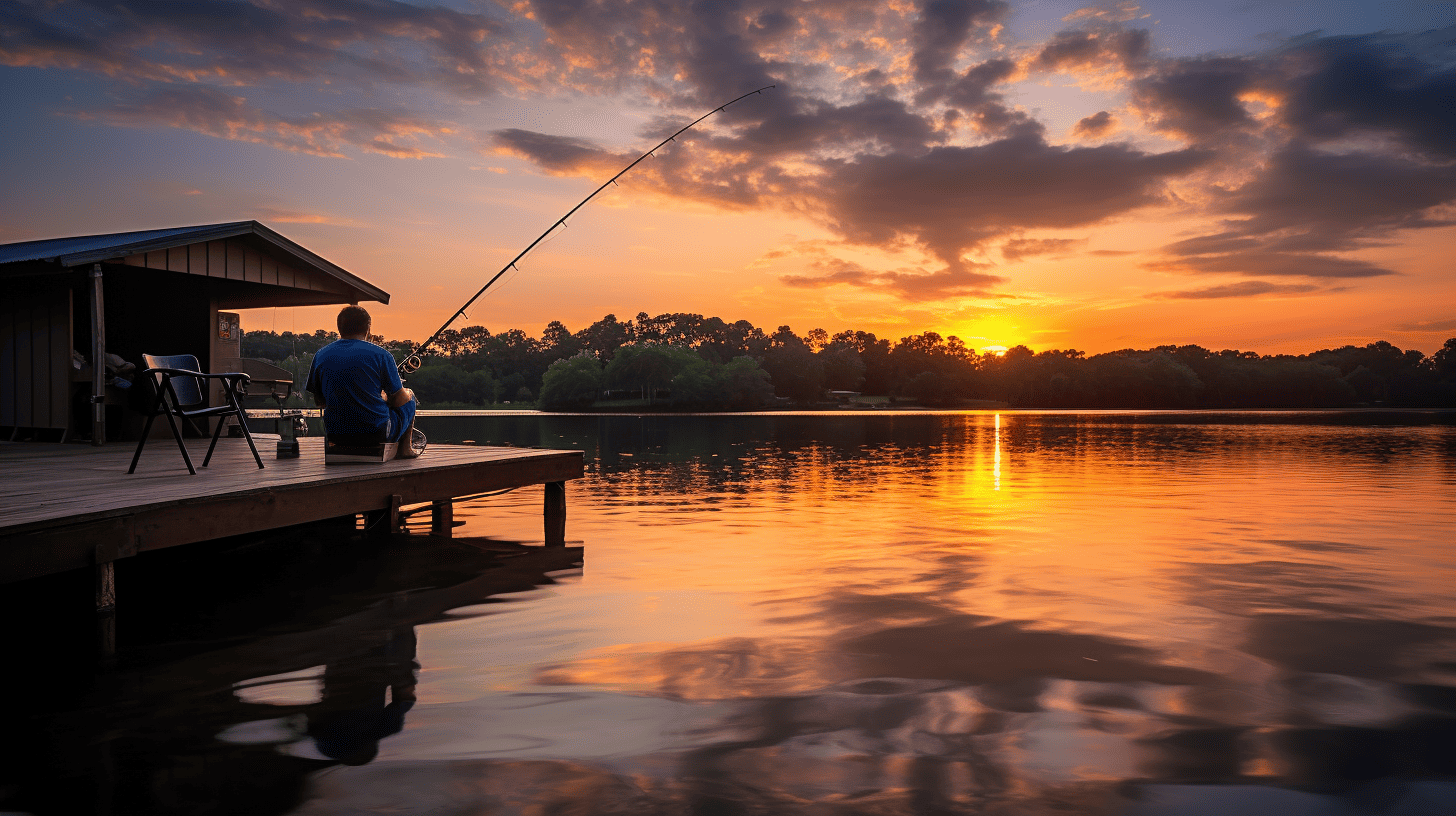
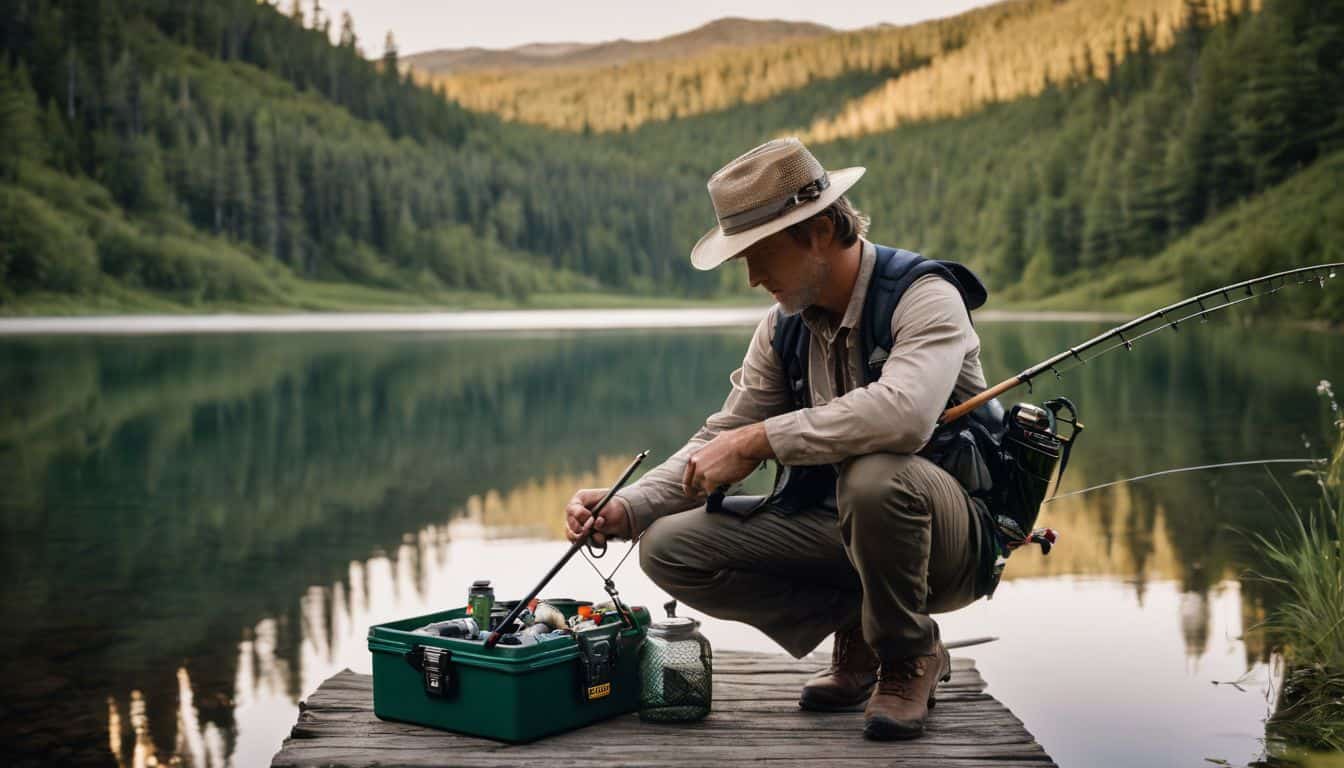
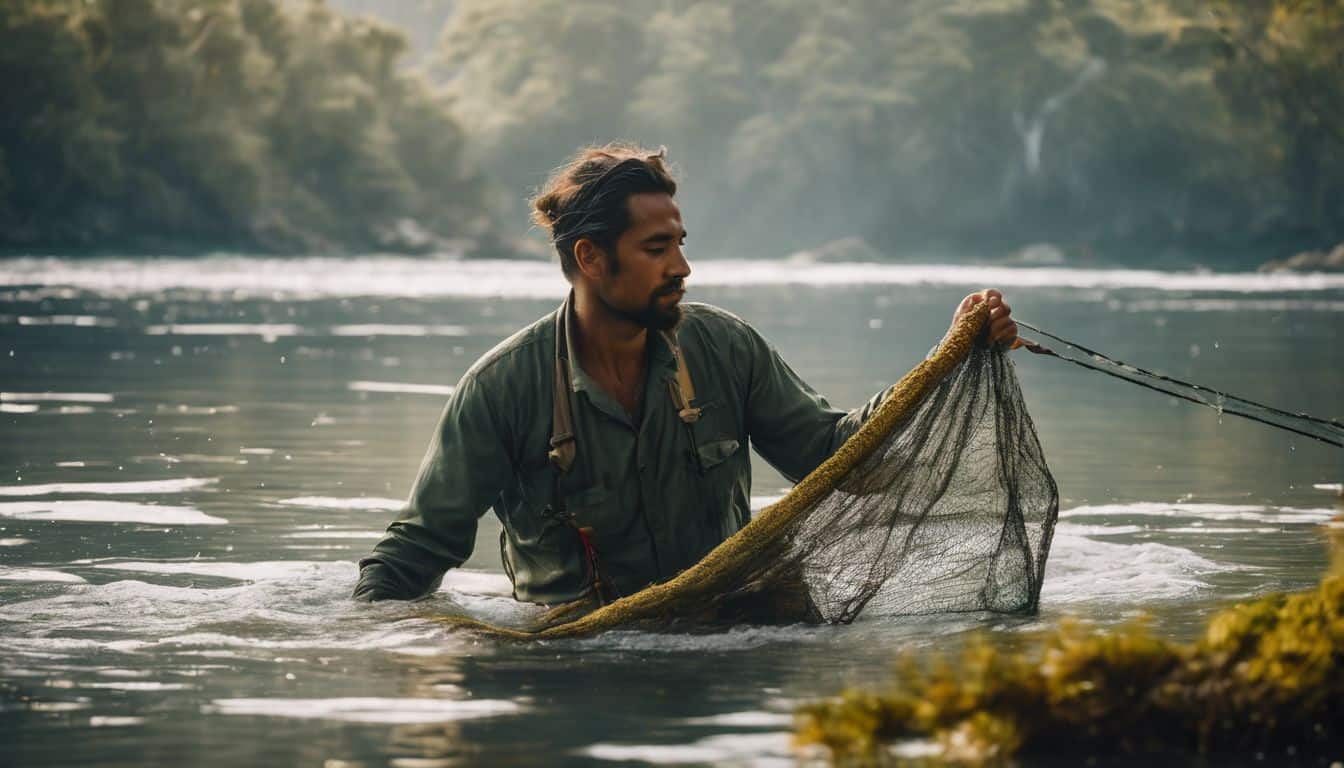
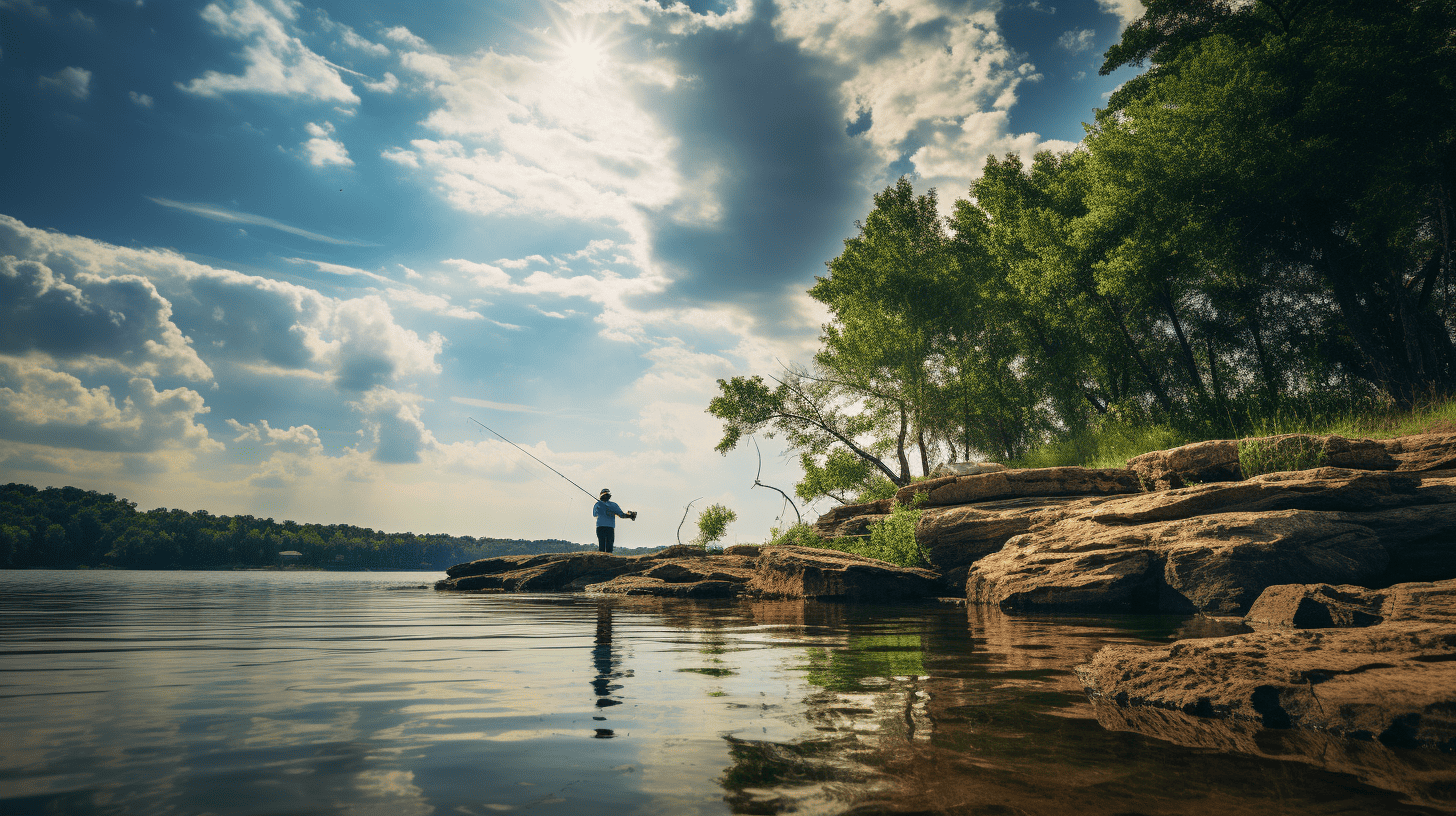
Leave a Reply